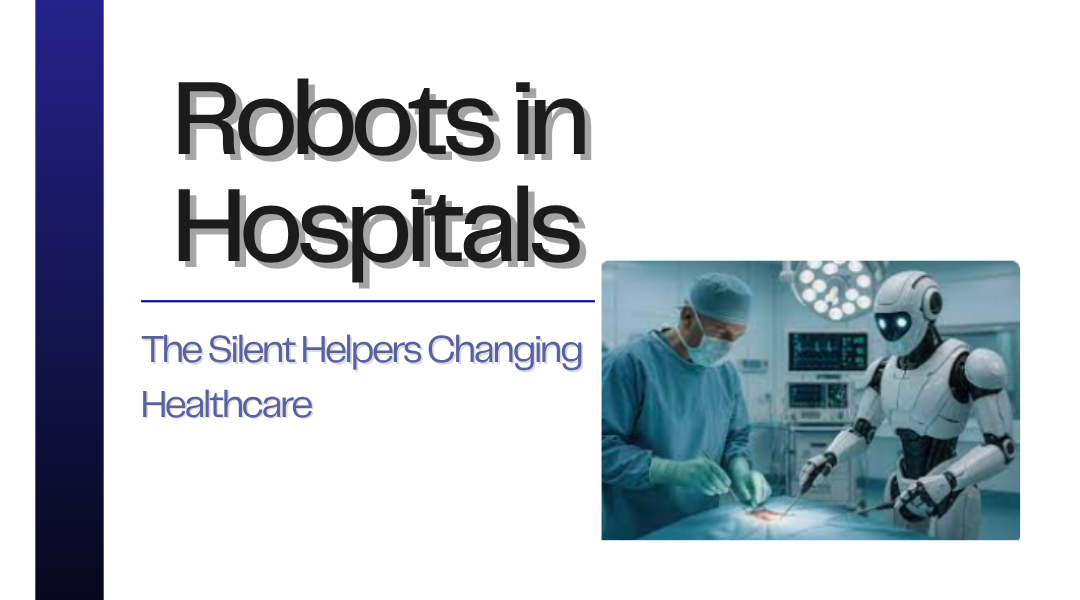Hospitals never sleep. Between emergency codes, overflowing supply carts, and the never-ending battle against infections, healthcare workers are stretched thin. But a quiet revolution is unfolding in hallways and operating rooms—autonomous robots, working behind the scenes, are taking on the grunt work so doctors and nurses can focus on healing.
Meet the Hospital’s New Workforce
- The Midnight Couriers
- Picture this: At 3 a.m., when the pharmacy is understaffed, a sleek robot glides into the elevator, delivering a dose of life-saving antibiotics to the ICU—no delays, no miscommunications. At NewYork-Presbyterian, bots like these have cut medication delivery times in half, ensuring no patient waits for critical treatment.
- Some even handle delicate tasks, like transporting lab samples with zero risk of human error. One hospital in Texas saw lab result turnaround times drop by 25% after deploying robotic couriers.
- The Disinfection Squad
- After a patient is discharged, a robot enters the room, raises its UV arms, and obliterates lingering bacteria in minutes. At Cleveland Clinic, these “light warriors” reduced C. diff infections by 50% in high-risk wards. Others roam hallways, misting disinfectant with the precision of a sniper—no missed spots.
- The Supply Chain Whisperers
- Ever seen a nurse dig through an empty supply closet during a code? Robots are fixing that. At Stanford Health, autonomous systems track inventory in real time, automatically restocking crash carts and surgical trays before they run low. One surgeon joked, “They’re like overachieving interns—always one step ahead.”
How They Pull It Off
- Ninja-Level Navigation: Using the same tech as self-driving cars, these bots dodge gurneys, visitors, and stray IV poles without breaking stride. Some even “learn” hospital layouts, optimizing routes over time.
- Silent Communicators: They sync with EHR systems, ping nurses when deliveries arrive, and even call elevators—no yelling for transport needed.
- Built for Safety: If something’s off (like an unexpected obstacle), they freeze, alert staff, or reroute—no Roomba-style chaos.
Why Hospitals Can’t Go Back
- Staff Actually Get to Be Staff: Nurses spend 28% less time on logistical chores in hospitals with AMRs, according to a JAMA study. More time for patients, less time hunting for gauze.
- Invisible Cost-Cutters: Brigham and Women’s Hospital saved $400,000 annually in overtime pay after bots took over after-hours supply runs.
- Infection Control That Works: When UCLA introduced disinfection robots, surface contamination in ORs dropped by 62%—a win for patient safety.
The Real-World Hiccups
- Not All Hospitals Are Robot-Ready: Older buildings with narrow doorways or unreliable Wi-Fi can stall deployments. (One bot at a 1950s-era hospital got stuck weekly in a quirky hallway—until engineers tweaked its programming.)
- “But Will It Steal My Job?” Some staff initially resisted, until they realized the bots handled tasks no one wanted. A nurse in Florida put it best: “I didn’t go to medical school to push a laundry cart.”
- Security Matters: Early models occasionally got hacked to play “Baby Shark” on loop—now, cybersecurity is baked into every design.
What’s Coming Next?
- AI Sidekicks: Future bots might predict which floors will need extra supplies during flu season or prep ORs before surgeons even ask.
- Voice-Activated Help: “Robot, bring me sutures to Room 12—stat!” Pilot programs are testing hands-free commands for chaotic moments.
- Robot Teams: During mass casualty events, swarms of bots could autonomously distribute supplies, track equipment, and even guide responders.
The Big Picture
This isn’t about flashy tech—it’s about fixing healthcare’s invisible inefficiencies. As one ICU director noted, “The best technology disappears into the workflow.” These robots aren’t replacing humans; they’re giving them back the time and energy to do what no machine ever can: care for patients, one human moment at a time.
